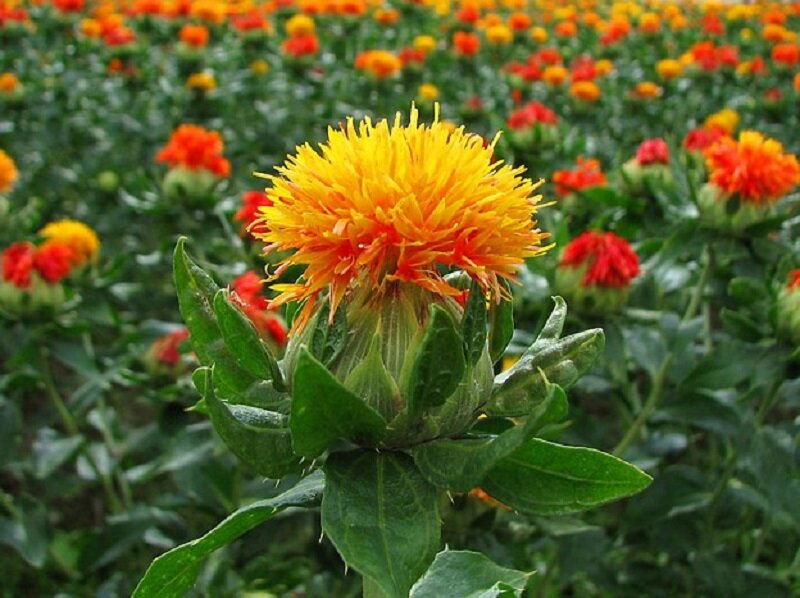Safflower festival held in Hamedan

TEHRAN – A flower festival dedicated to the safflower has been recently held in the village of Qabaq Tappeh, Hamedan province, on the occasion of the national tourism week (September 27-October 4).
The festival aimed at promoting tourism capacities of the region, a local tourism official has said.
Additionally, involving the local community in cultivation and sustainable employment was another goal of the festival, Mehdi Gholami explained on Monday.
The oldest and perhaps most beautiful evidence of flower bouquets in Iran is found in the stone carvings of the UNESCO-registered Persepolis. Over 2500 years old, the stone carvings show Darius I (550 – 486 BC), holding the scepter of authority in one hand and a lotus flower with two buds in his right hand, a symbol of royalty.
Flowers have also thrived in the Persian language. Many girls are named after flowers: Ra’na (Blanket Flowers), Shaghayegh (Anemone), Banafsheh (Violet), Yaasaman (Jasmine), Niloofar (Lotus flower), Nastaran (Eglantine), Laleh (Tulip), Narges (Daffodil), etc.
Known in classical times as Ecbatana, Hamedan was one of the ancient world’s greatest cities. Pitifully little remains from antiquity, but significant parts of the city center are given over to excavations. Ecbatana was the capital of Media and subsequently a summer residence of the Achaemenian kings who ruled Persia from 553 to 330 BC.
Hamedan has had many names: it was possibly the Bit Daiukki of the Assyrians, Hangmatana, or Agbatana, to the Medes, and Ecbatana to the Greeks. One of the Median capitals, under Cyrus II (the Great; died 529 BC) and later Achaemenian rulers, it was the site of a royal summer palace.
About 1220 Hamedan was destroyed by the Mongols. In 1386 it was sacked by Timur (Tamerlane), a Turkic conqueror, and the inhabitants were massacred. It was partly restored in the 17th century and subsequently changed hands often between Iranian ruling houses and the Ottomans.
Sitting on a high plain, Hamedan is graciously cool in August but snow prone and freezing from December to March. In summer the air is often hazy.
Ali Sadr cave, Ganjnameh inscriptions, Avicenna Mausoleum, Hegmataneh hill, Alaviyan dome, Jameh mosque, and St. Stephanos Gregorian Church are amongst Hamedan’s attractions to name a few.
ABU/MG
